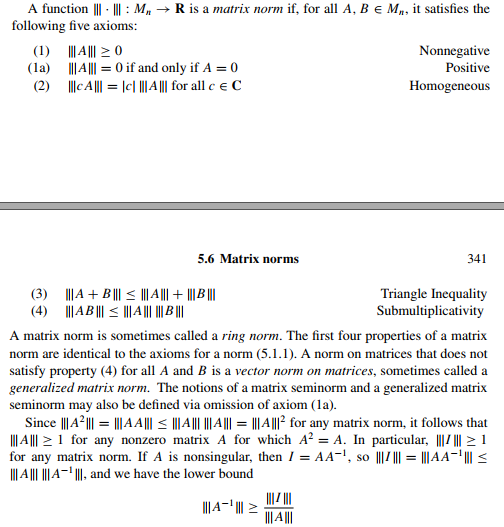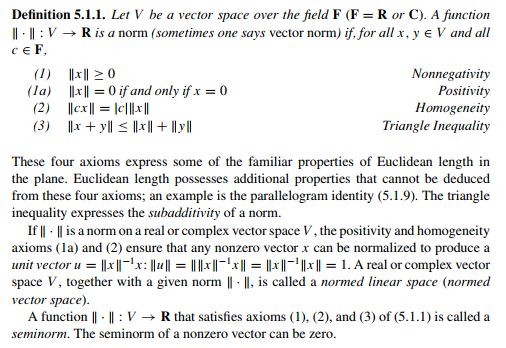Answered step by step
Verified Expert Solution
Question
1 Approved Answer
Prove that the spectral radius () is not a matrix norm on Mn by giving examples of it failing to satisfy three of the four
Prove that the spectral radius () is not a matrix norm on Mn by giving
examples of it failing to satisfy three of the four properties required of a matrix norm (positivity, homogeneity, subadditivity, sub-multiplicativity), and prove that it satisfies one of these four properties


Step by Step Solution
There are 3 Steps involved in it
Step: 1

Get Instant Access to Expert-Tailored Solutions
See step-by-step solutions with expert insights and AI powered tools for academic success
Step: 2

Step: 3

Ace Your Homework with AI
Get the answers you need in no time with our AI-driven, step-by-step assistance
Get Started


